
The new Ghora Mandir (Horse Temple)
in a New Delhi suburb, where over
forty thousand Waghri people live.
Originally from Gujarat, many of them
recycle Indian clothing.

The local wholesale market opens at 3.00am.
Despite the dilapidated roof and cramped
conditions, the market will host 2000 or more
traders by dawn.
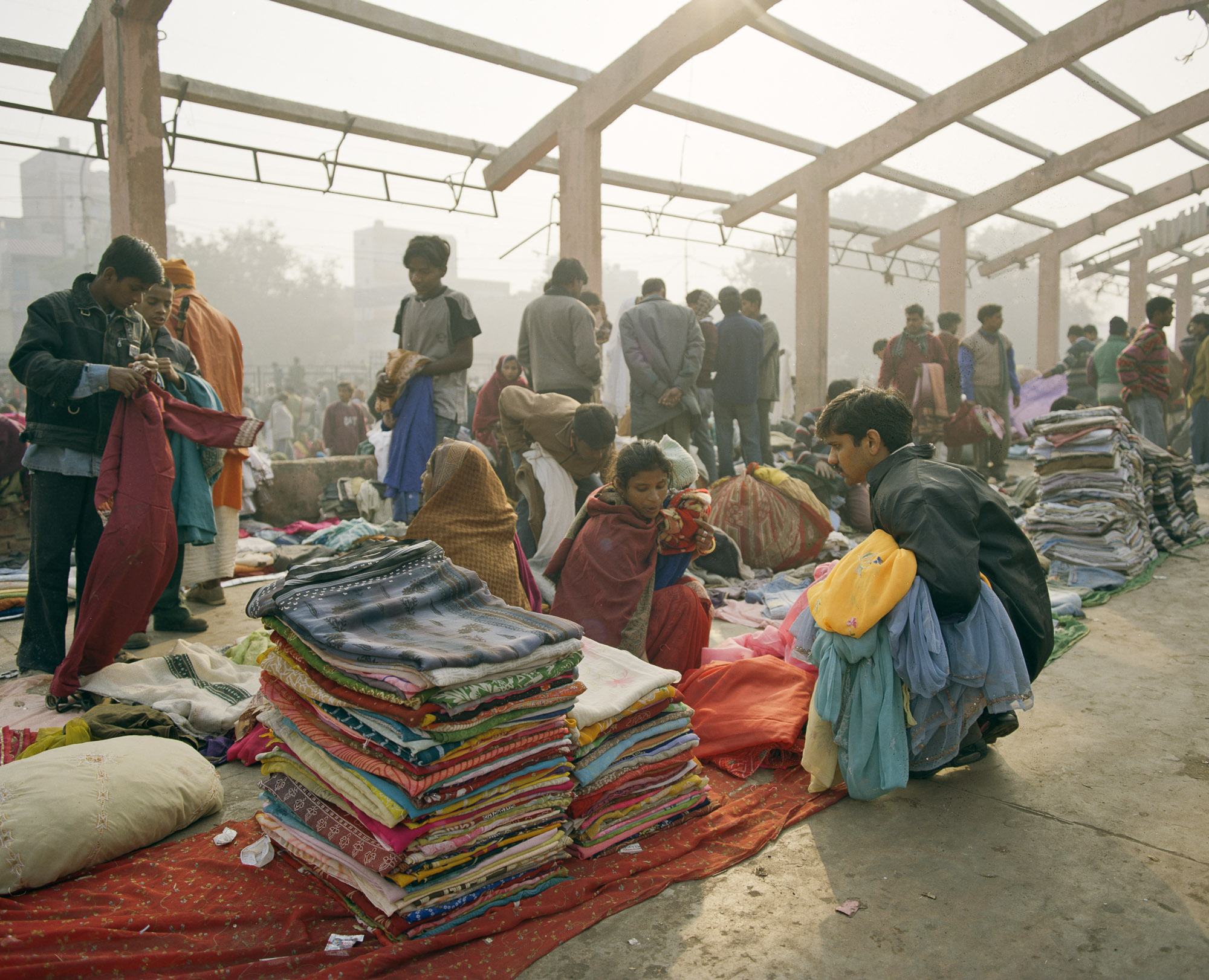
Buyers specialize in certain garments,
trawling the lines of women sitting selling
saris, shalwar kamiz, shirts and trousers.
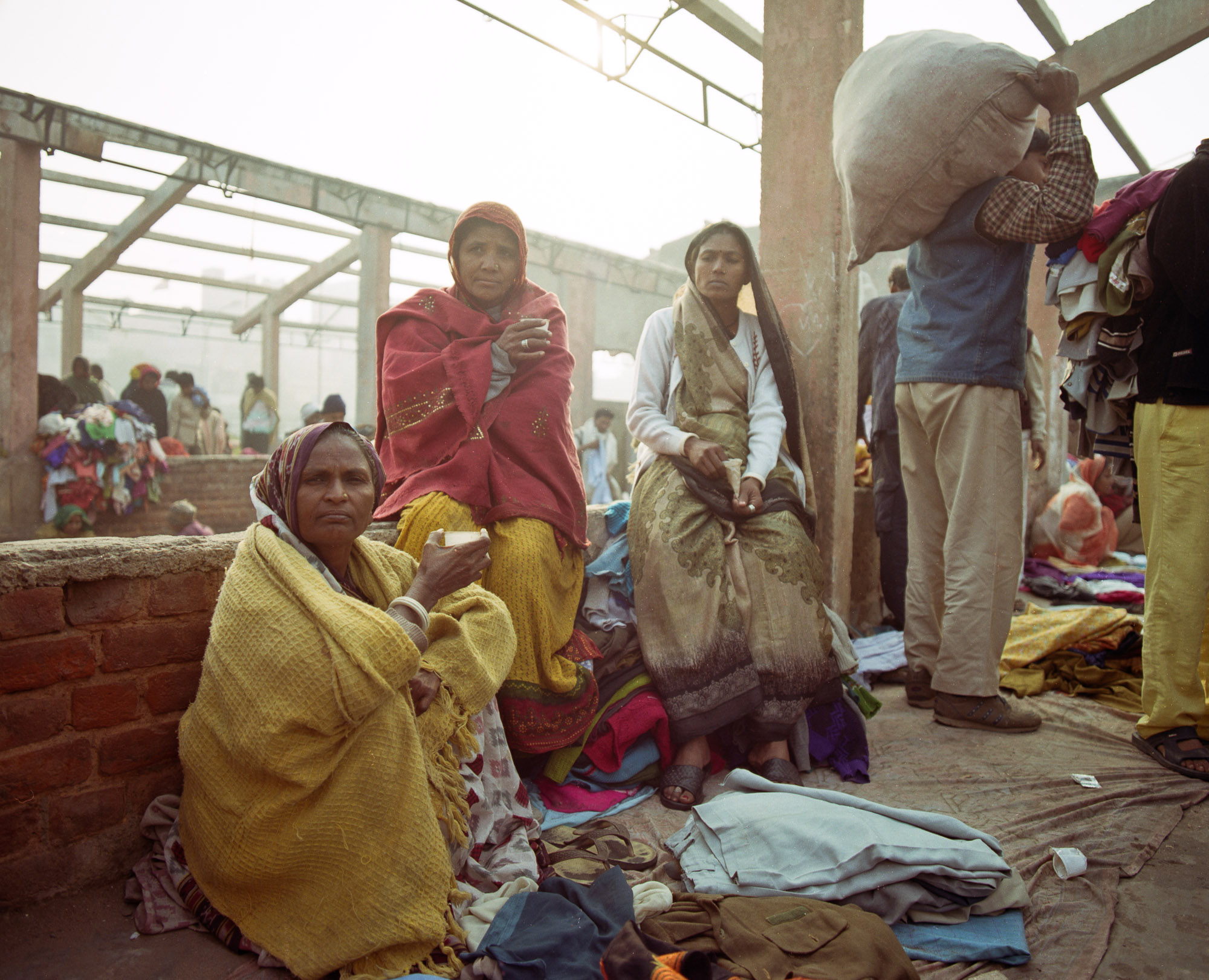
Women drinking chai on a December
morning. Families often work together,
traveling to their regular suburban patches
to barter for clothes and selling them together
at the market.
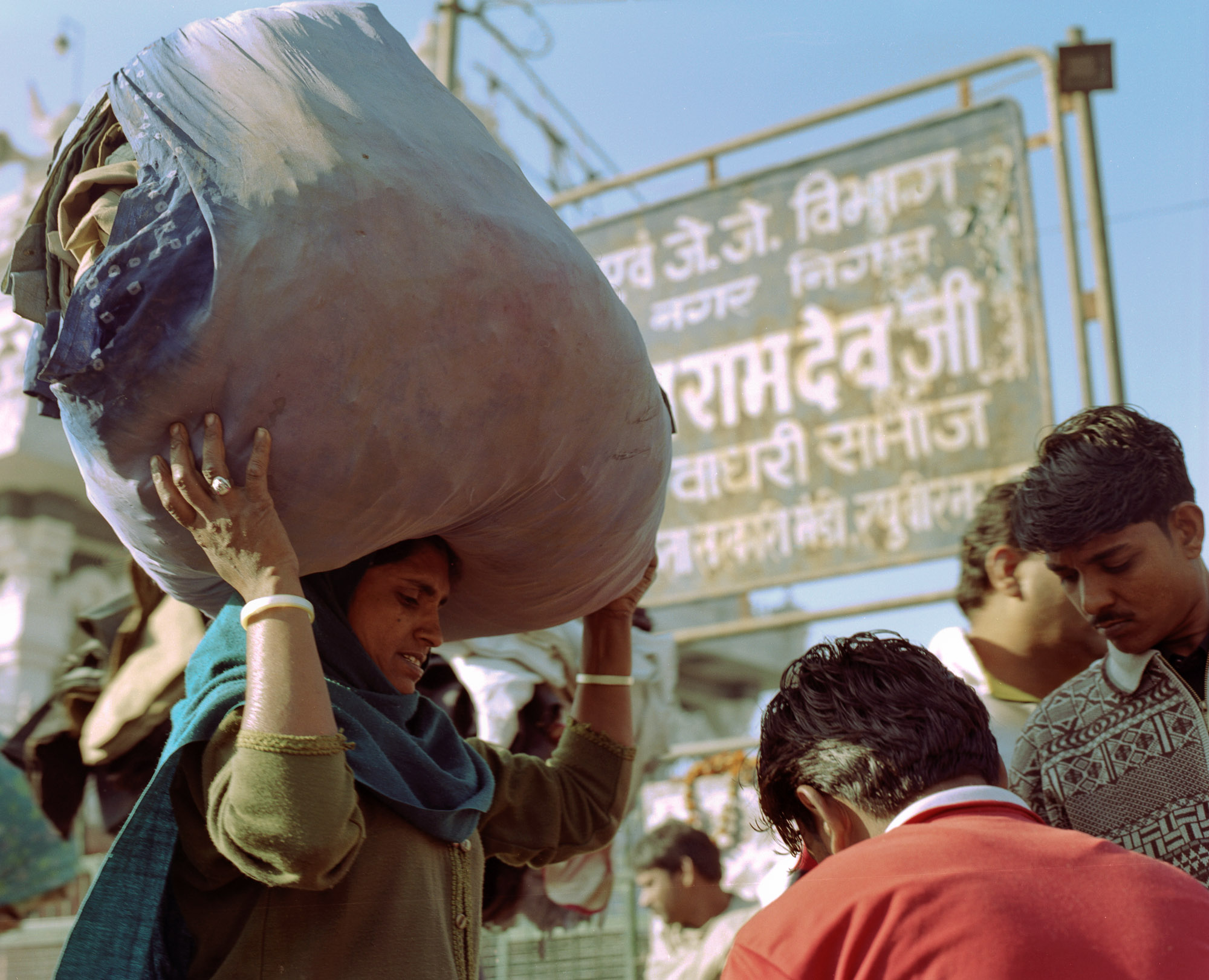
By late morning business slows down and piles
of clothing lie waiting to be collected by their
new owners.

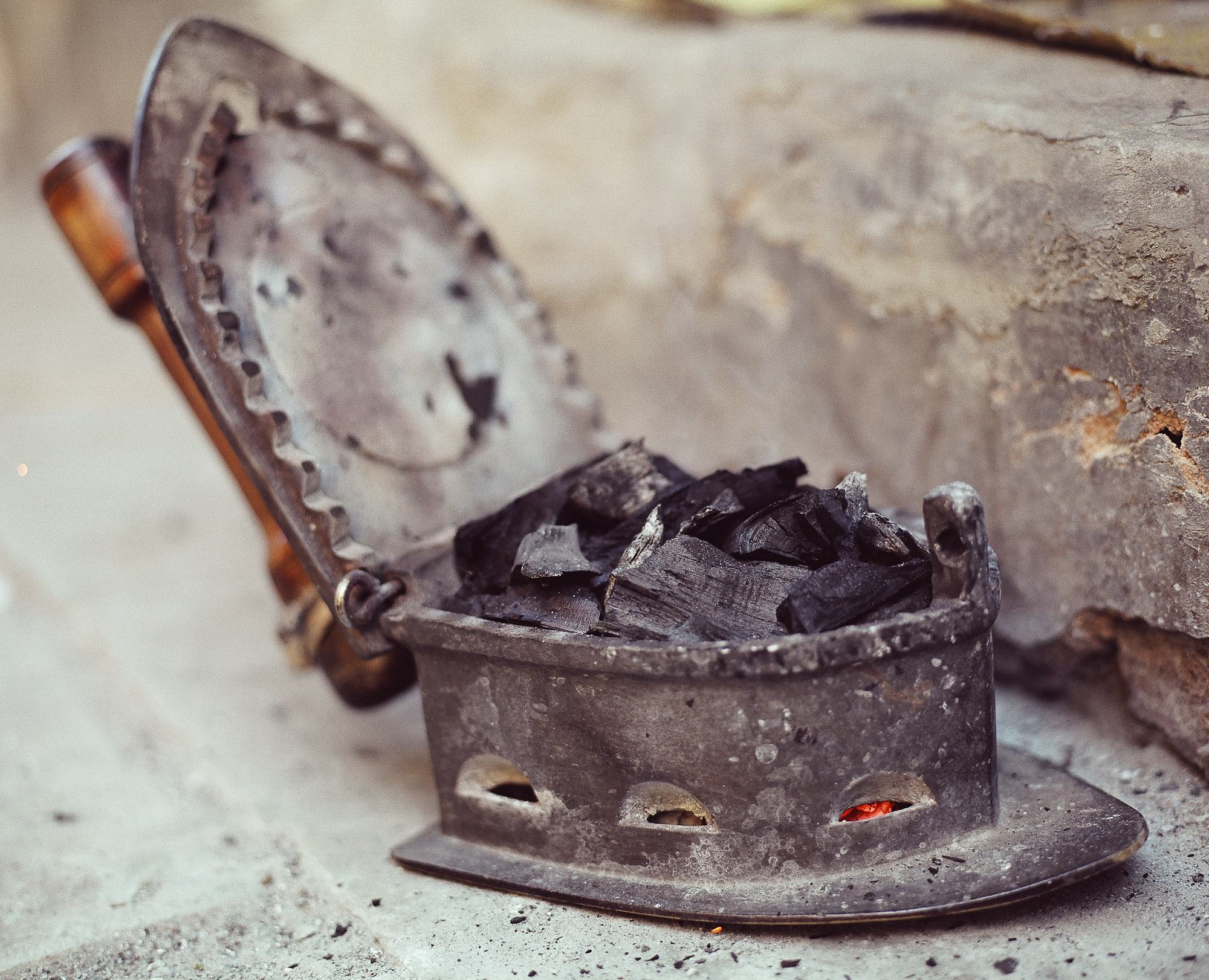
The lower quality second-hand clothing
is then mended, washed and ironed
in the housing colony surrounding
the market before being sold again
back to poorer Indians at local markets.

The local area is swathed with drying washing,
festooning houses, draping over road barriers
and strung across patches of wasteland.
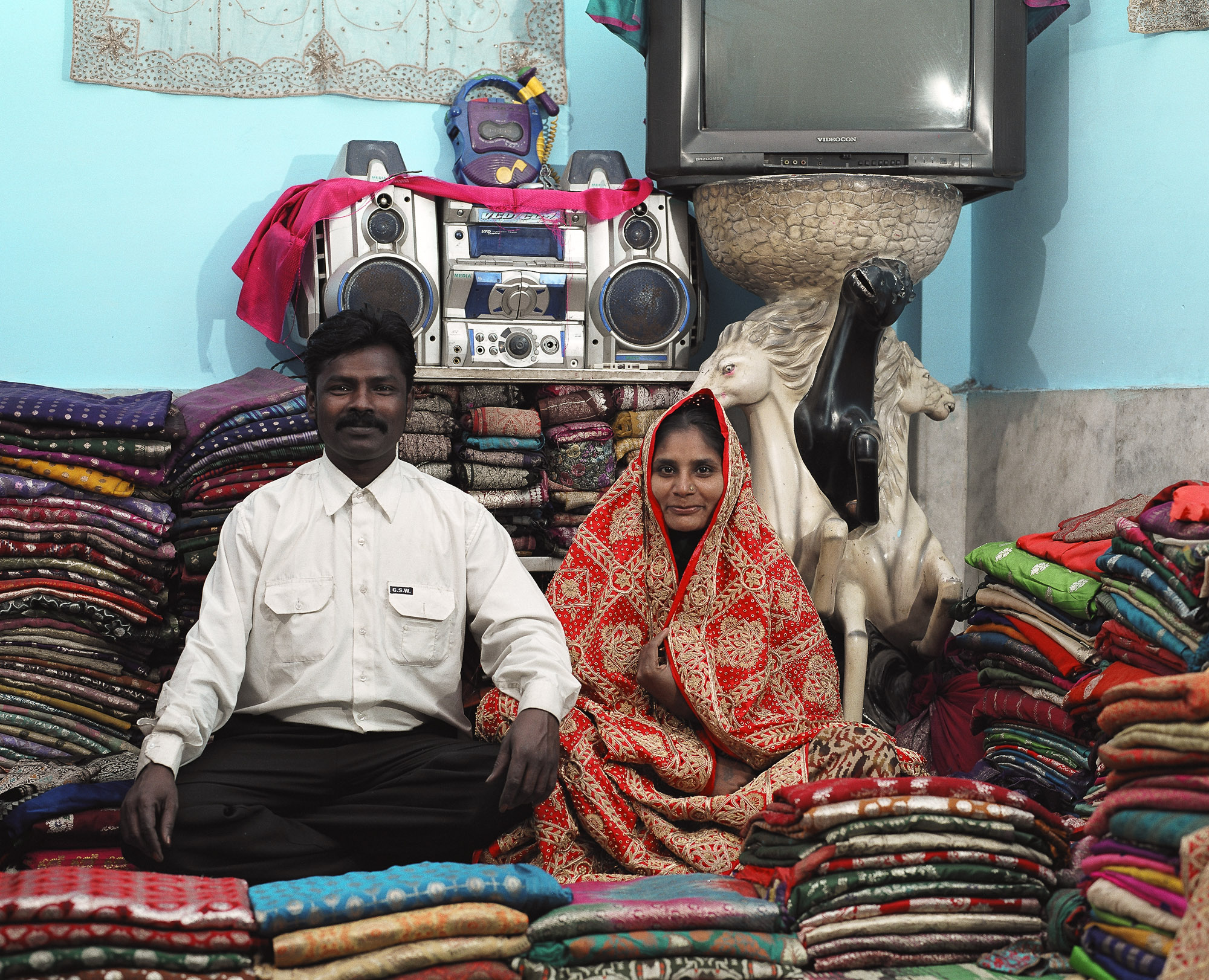
The higher quality clothing will be sold further
afield. This Waghri couple deal in silk saris
in their home. Such traders amass hundreds
of silk saris cast out from wedding trousseau
into the secondhand markets for re-sale.
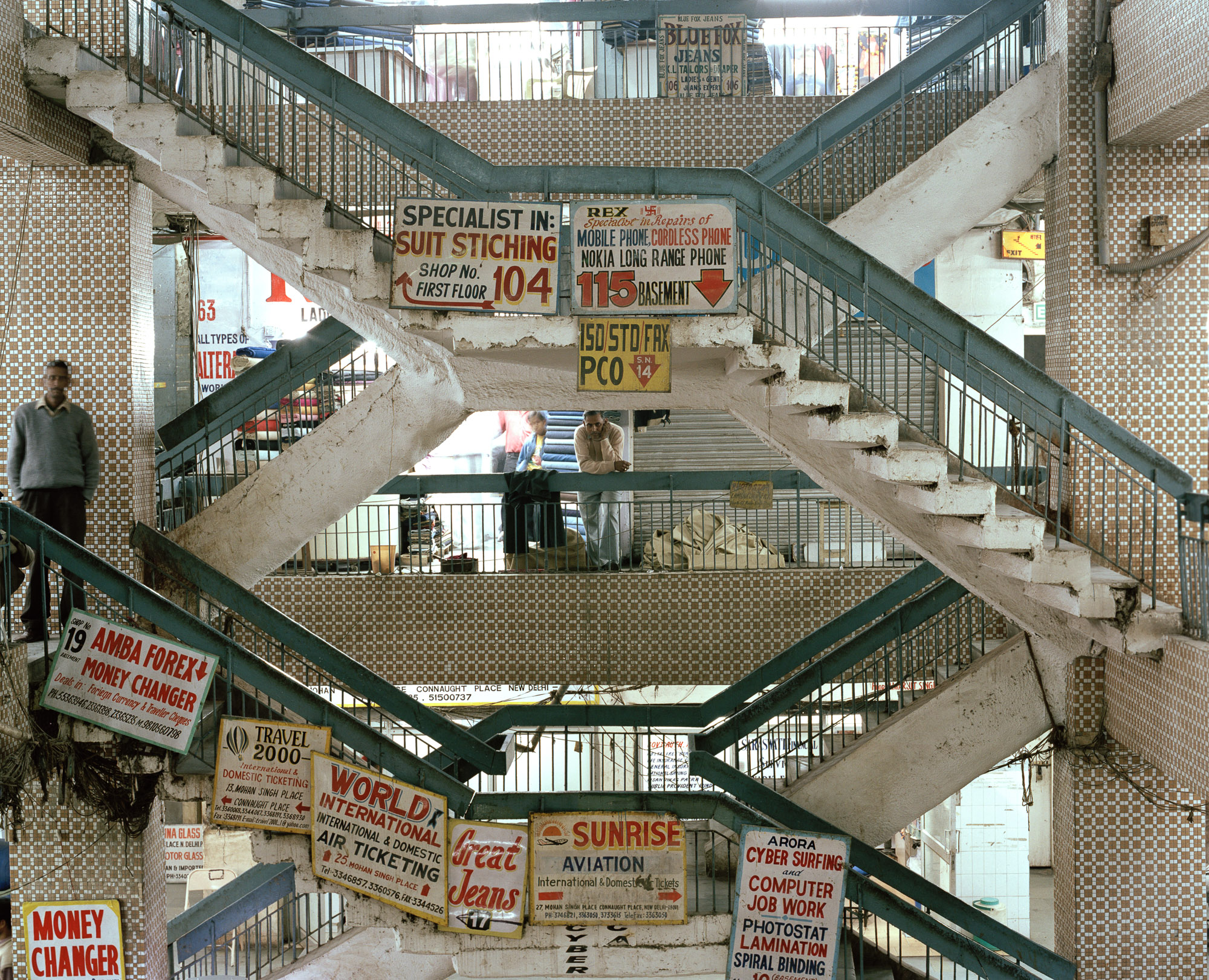
One of the many shopping complexes
in central New Delhi where small clothing
manufacturers and fashion retailers
transform secondhand saris into accessories
for export to the west.
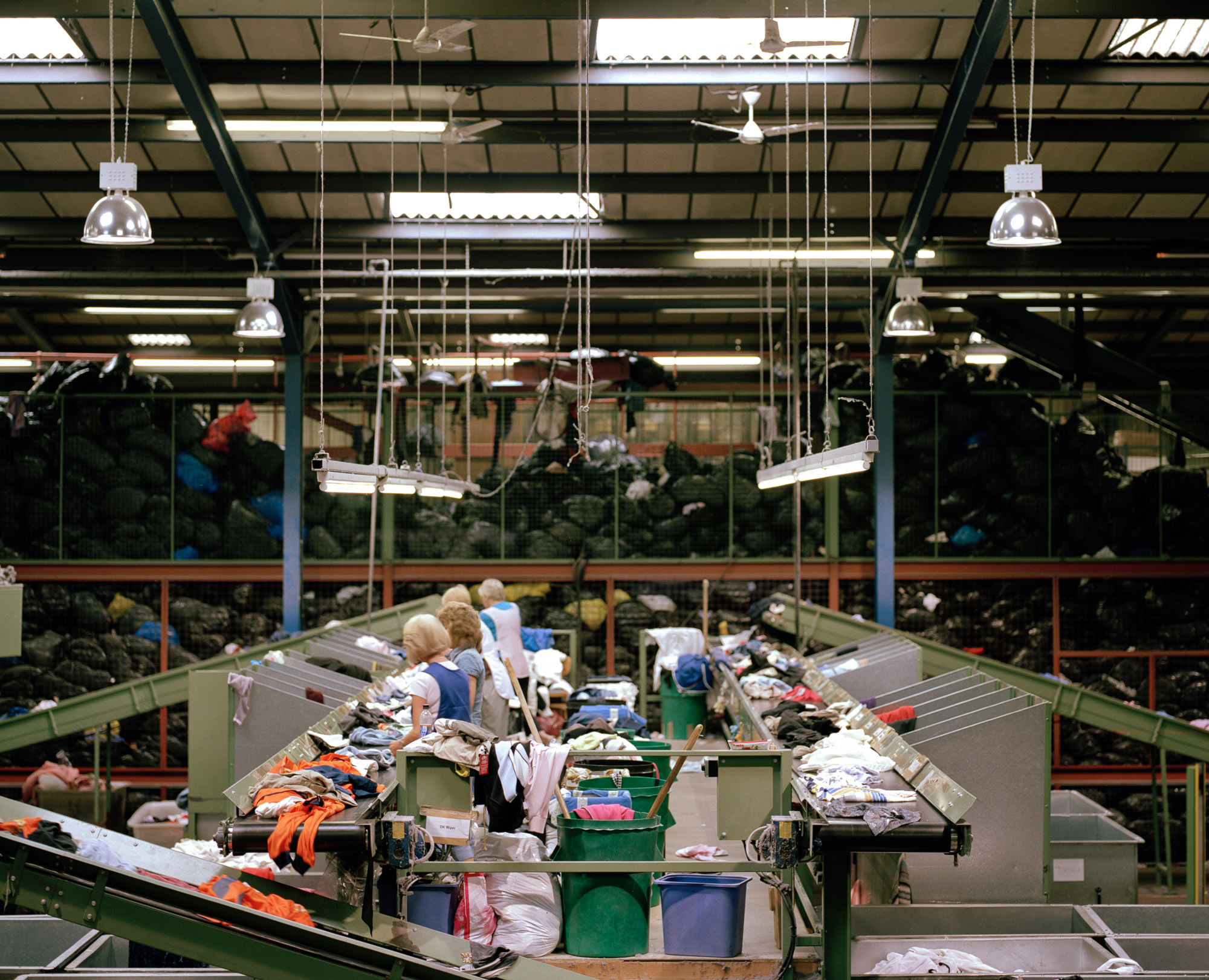
Meanwhile, a textiles recycling depot
in Yorkshire collects clothing donated
from all over the country. Mountains
of black plastic bags are split open
and their contents sorted on conveyor
belts.
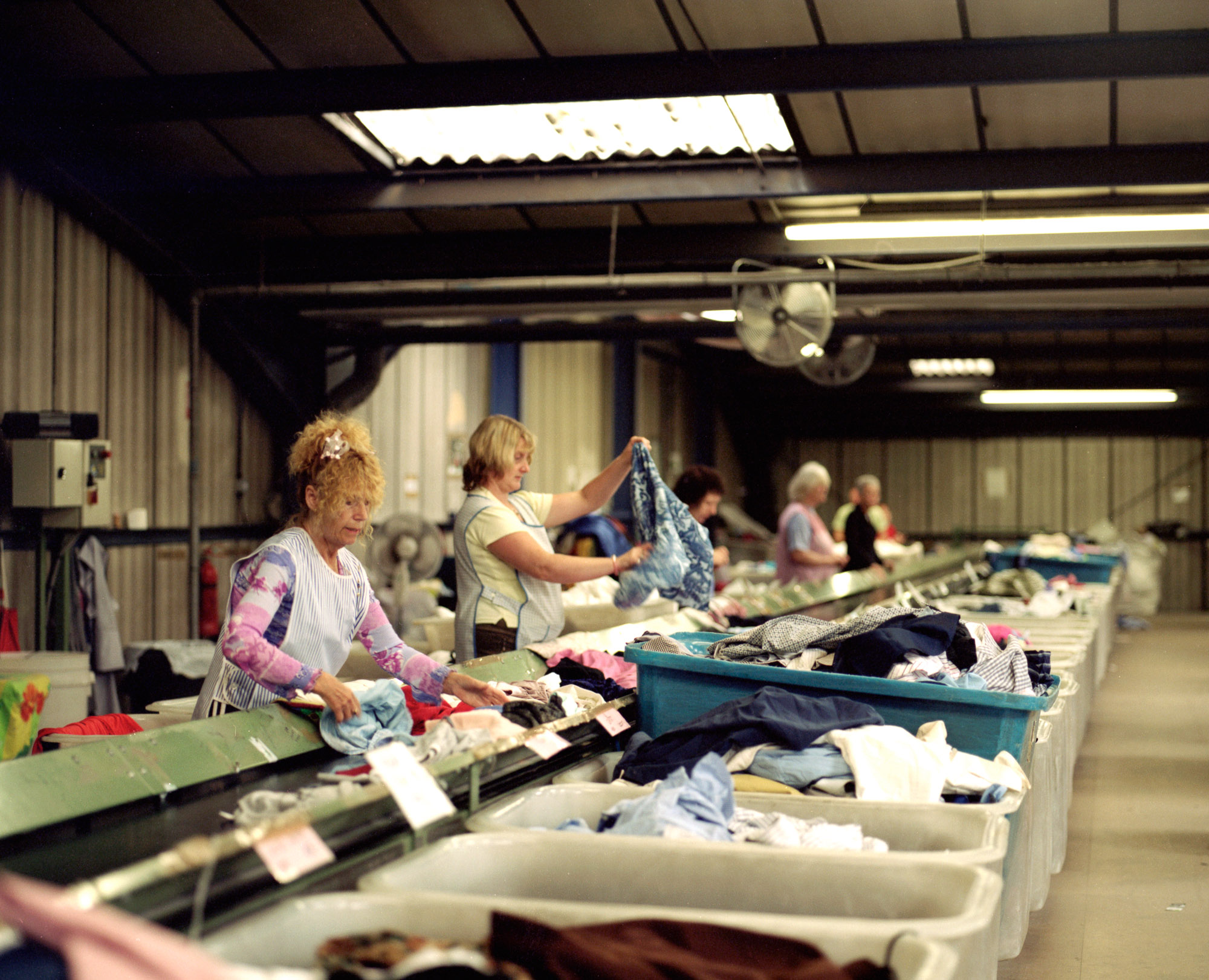
Over half a million tonnes of cast-offs
are collected annually, of which only
about 20% is reused in the UK. Clothes
are sorted and graded into categories
based on garment style, fabric, weight
and colour depending on the current
demands of the various markets.

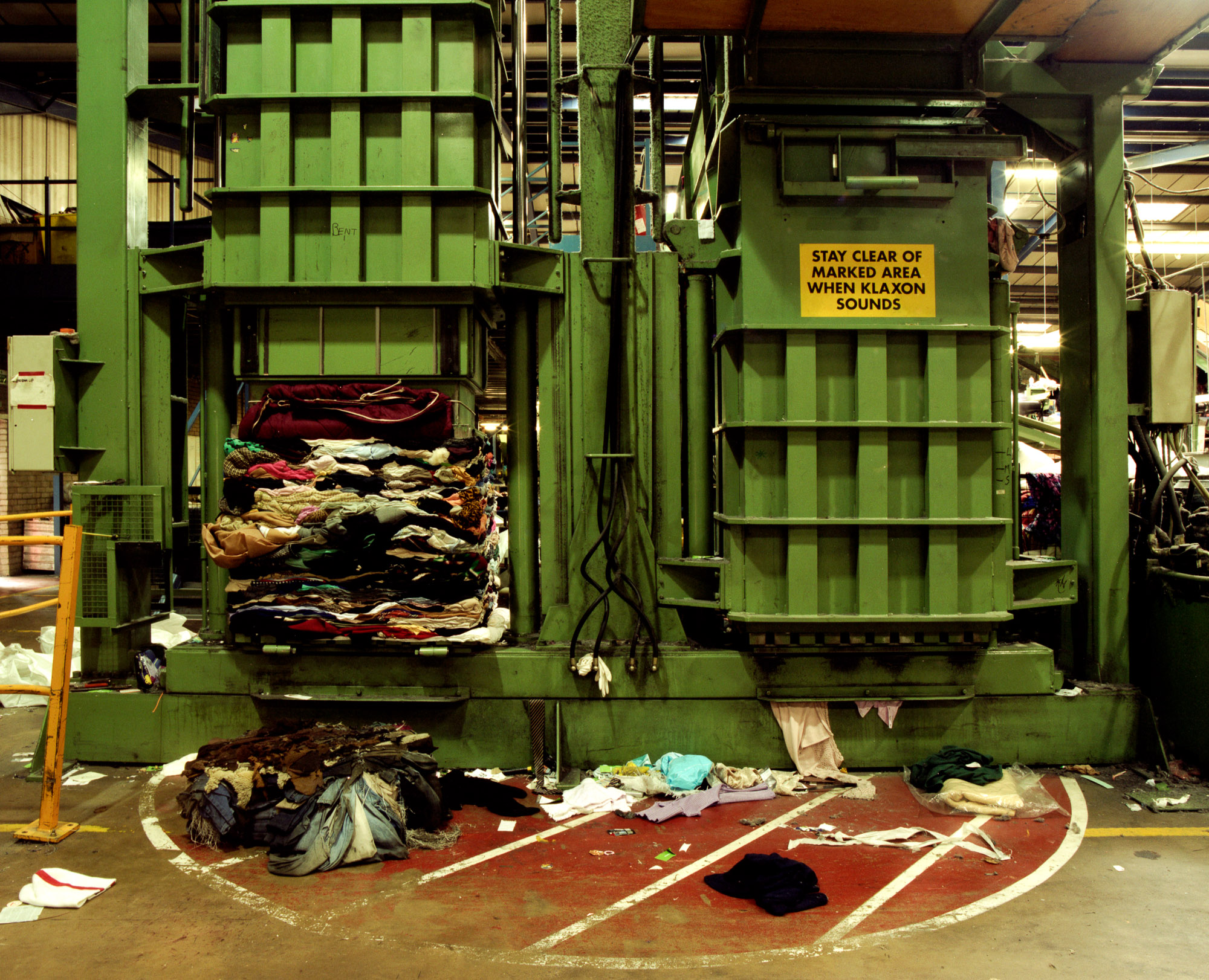
The sorted clothing is then compressed
into bales weighing up to 2 tons, ready
for transportation around the globe.
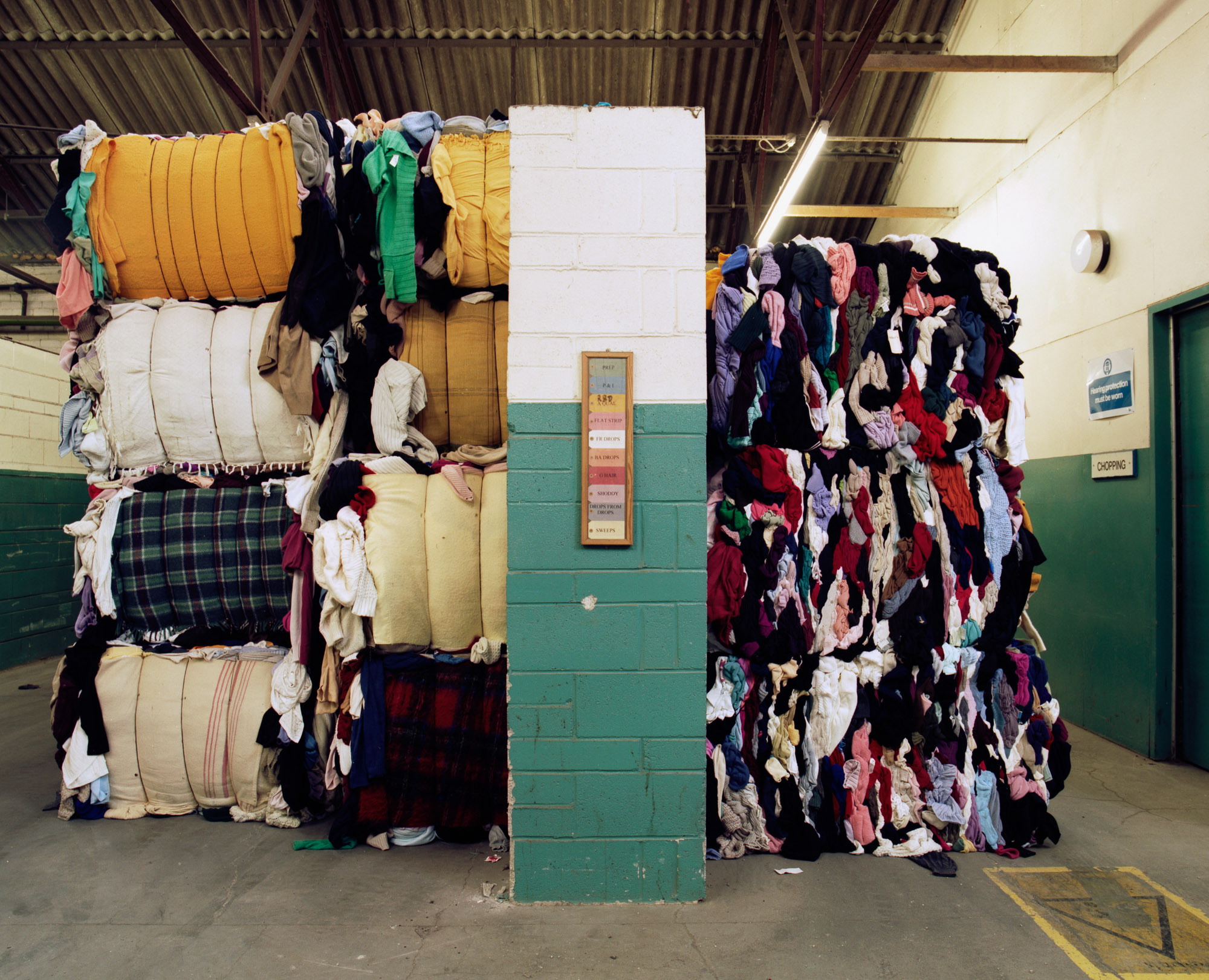
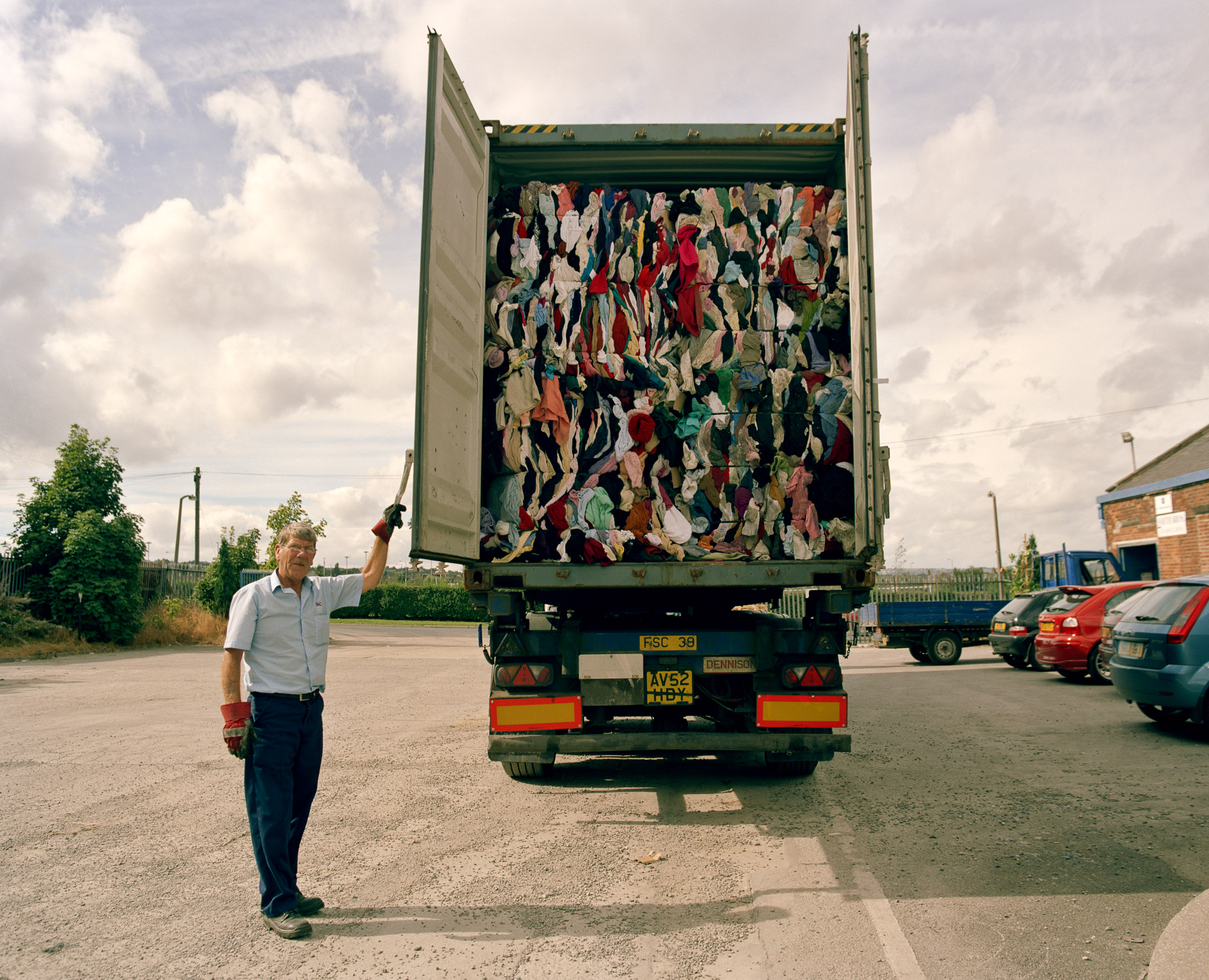

Bales of exported western clothing sit behind
a dealer in global second-hand garments
in Azad Market, Old Delhi.
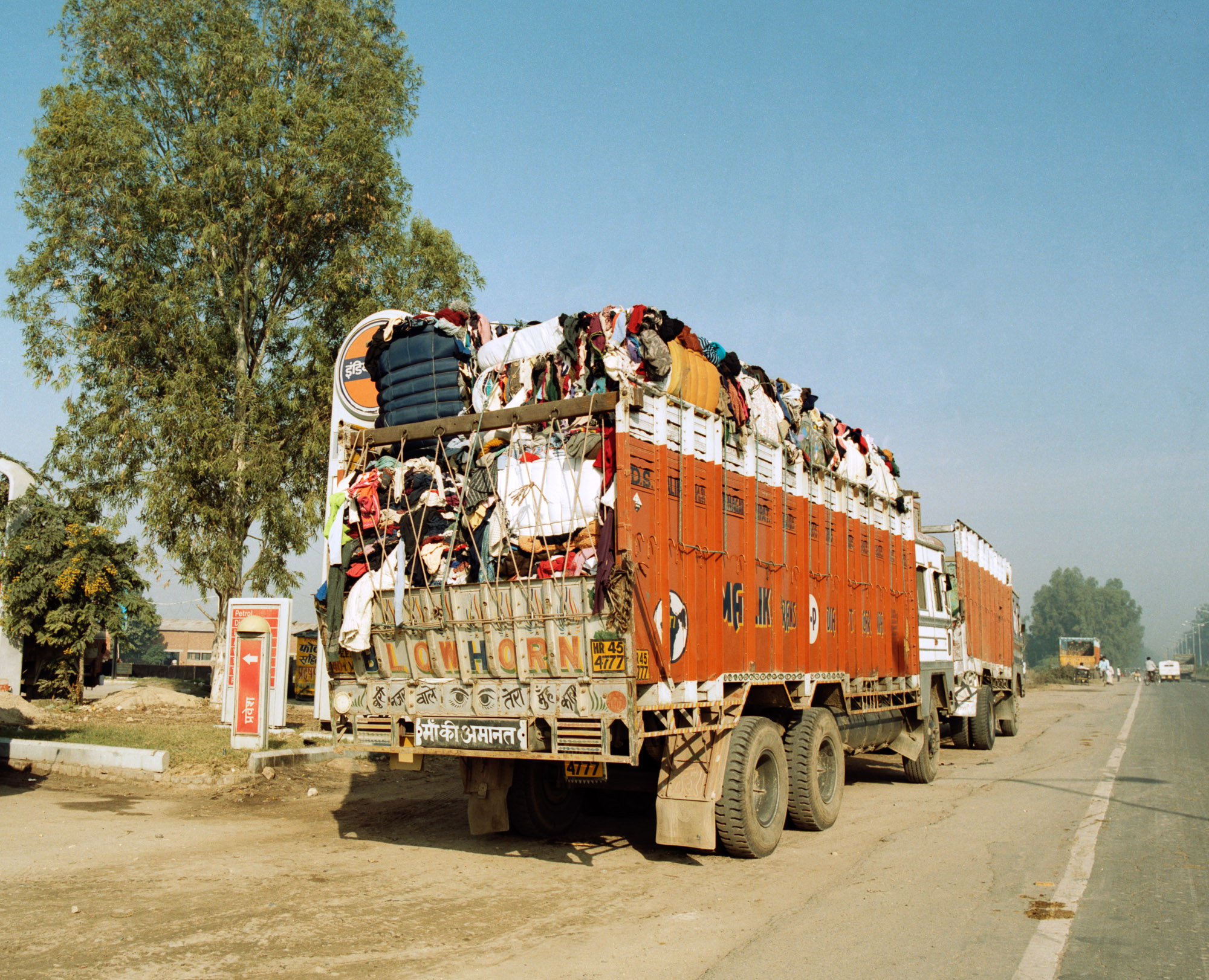
Over 100,000 tonnes of used clothing
is imported into India every year
for recycling. Every day, truck loads
of imported clothing bales are driven
from India's ports up the Grand Trunk
Road to Panipat, north of Delhi.
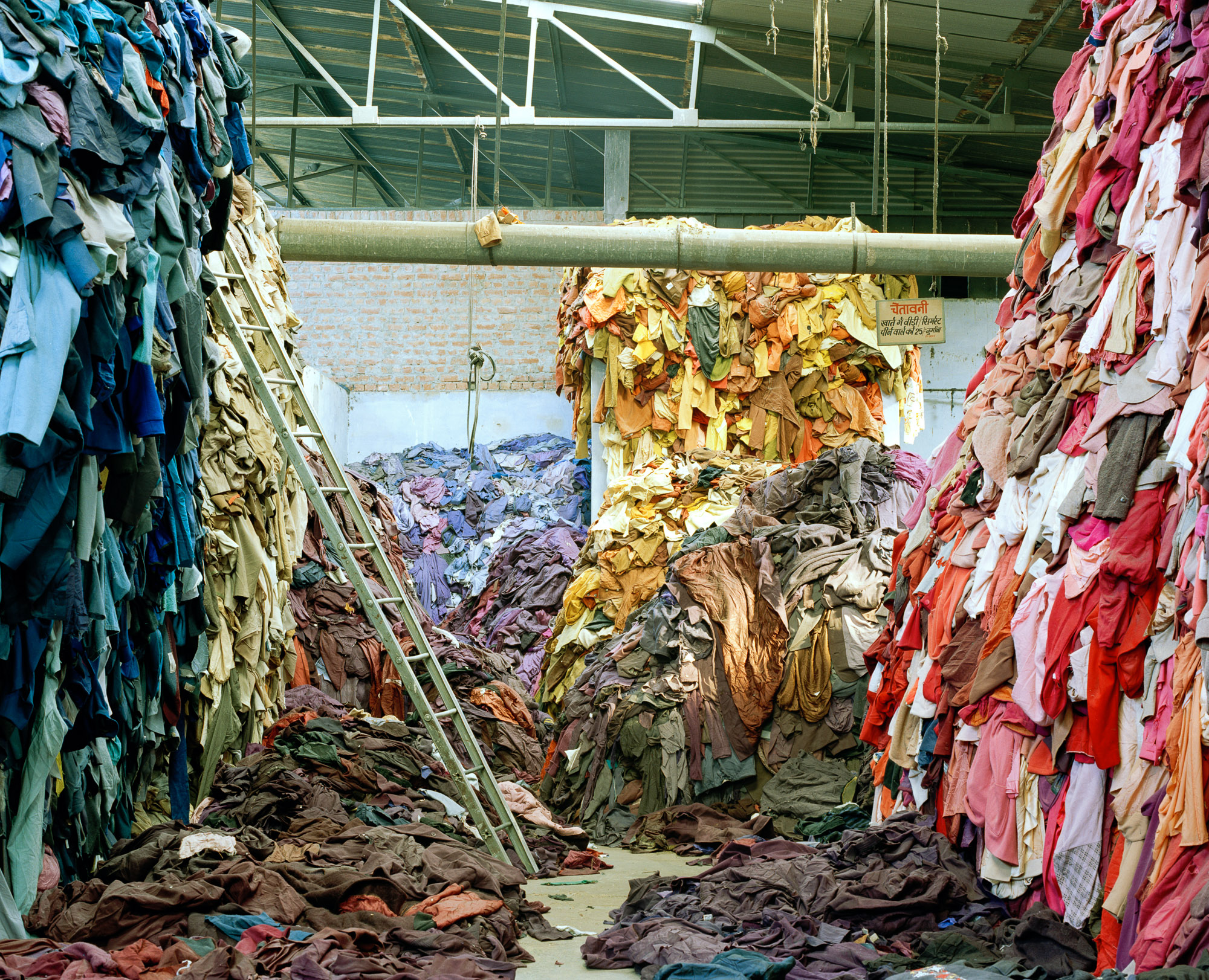
Cast-off woolen clothing is sorted again in large
warehouses in Panipat, now into basic colour
groups, where it's new value lies.
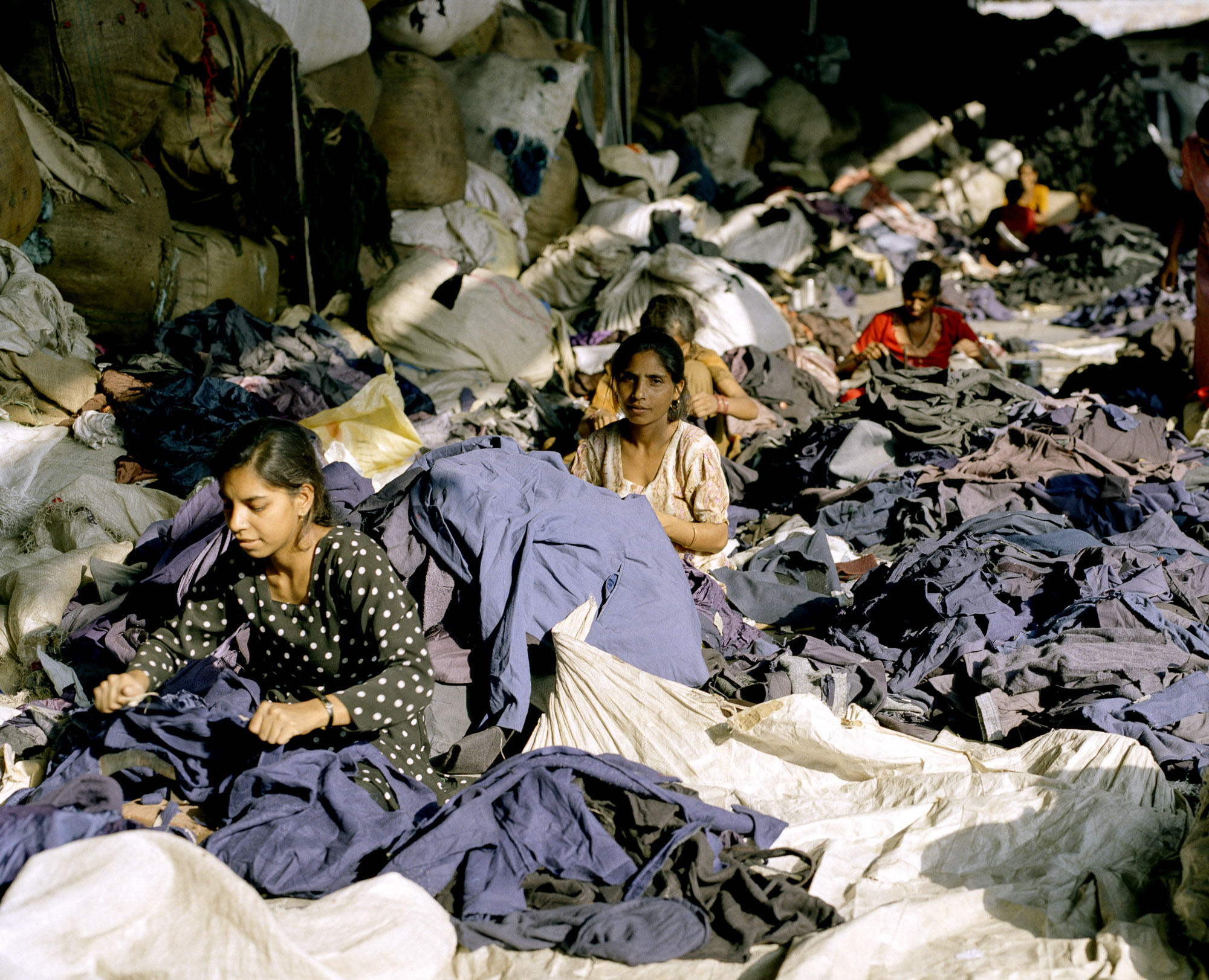
Women cut up jumpers, jackets and coats
using traditional vegetable cutters. Garment
labels advertising expensive brand names
and global origins are discarded as worthless
information.
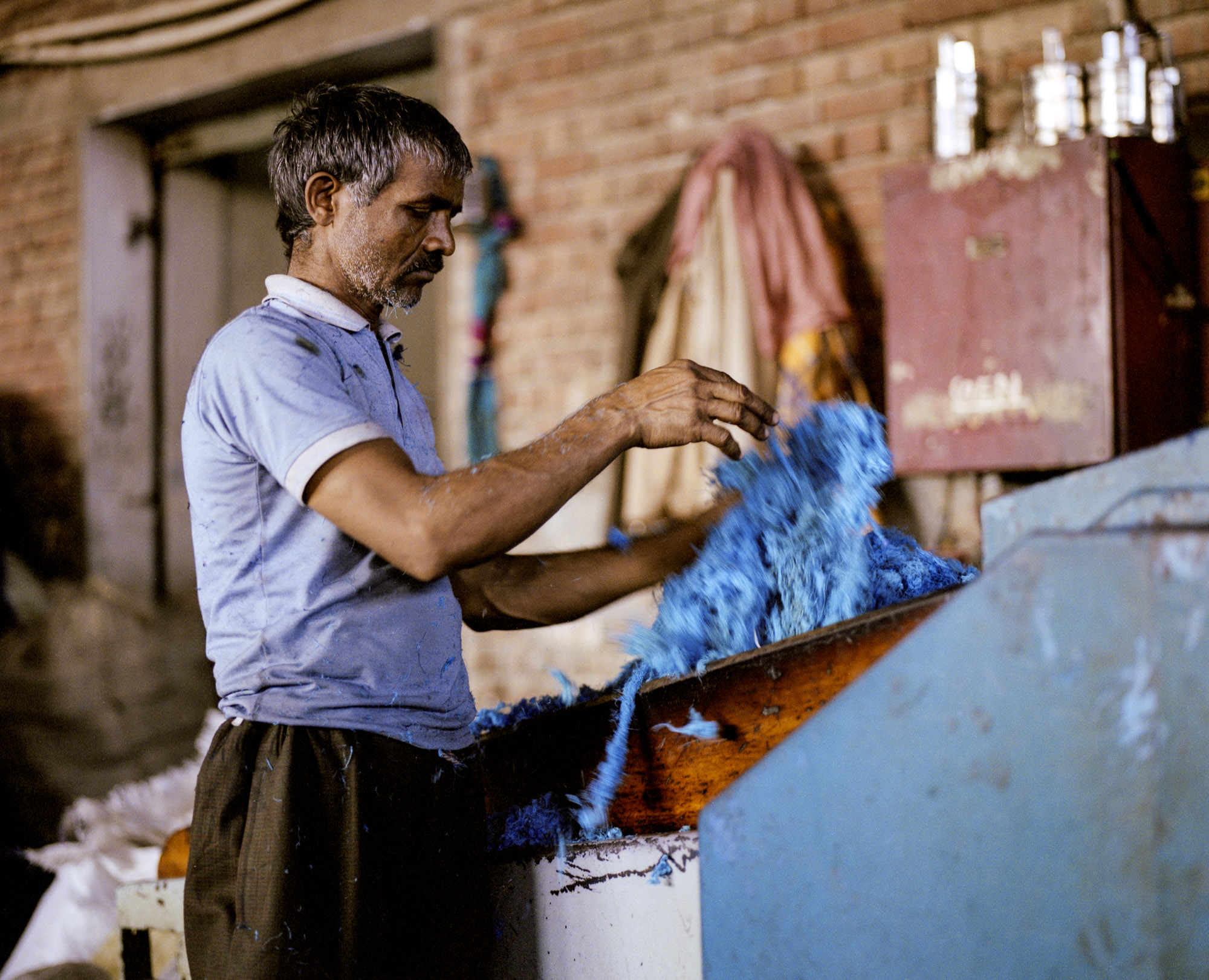
Cavernous sheds are filled with old machines
which break down the knitted and woven
clothing into pulp, a source of reclaimed woolen
and wool-mix fibres known as “shoddy”.
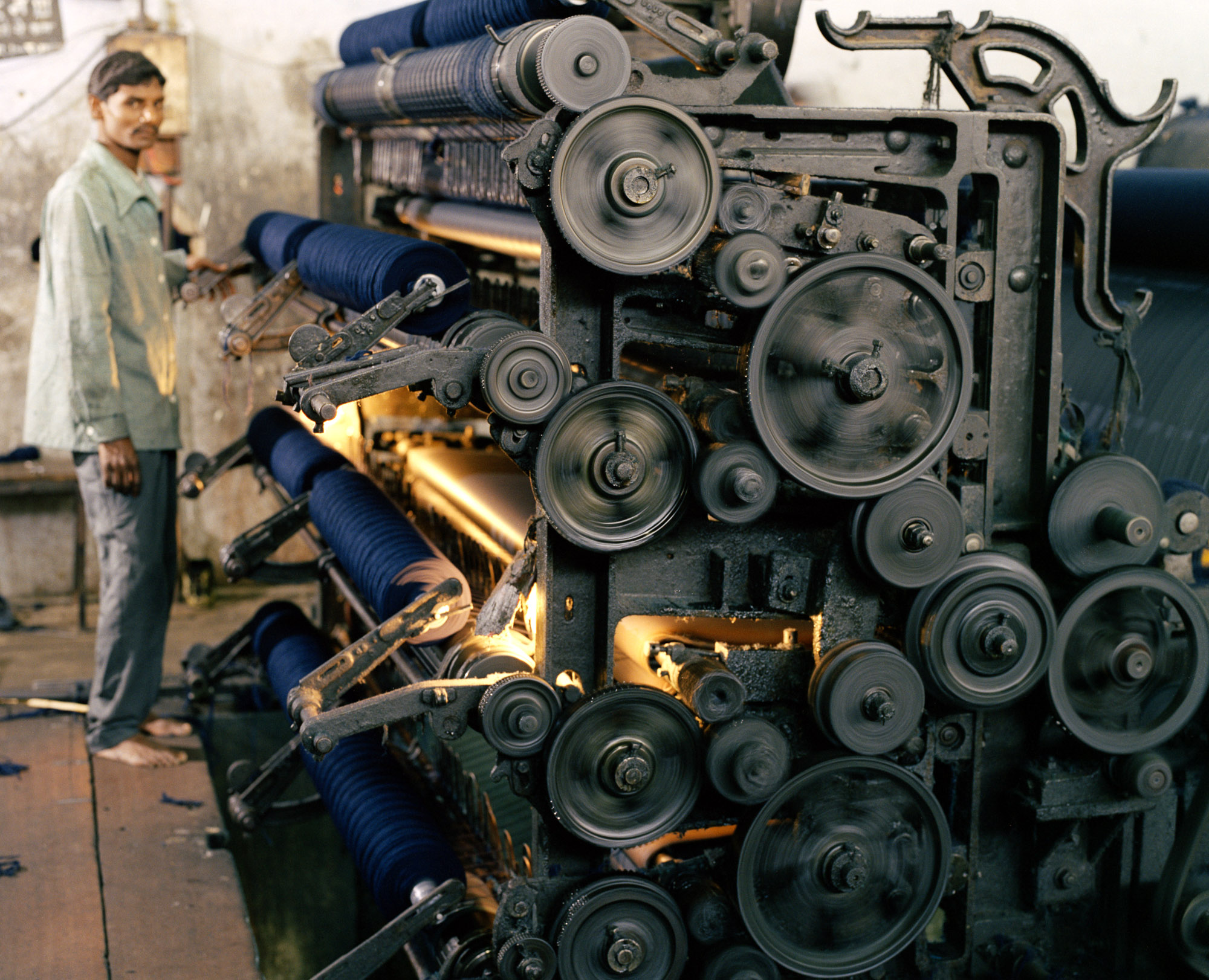
Fibres are then spun into recycled yarn. This
can then be re-woven or knitted into new
products.
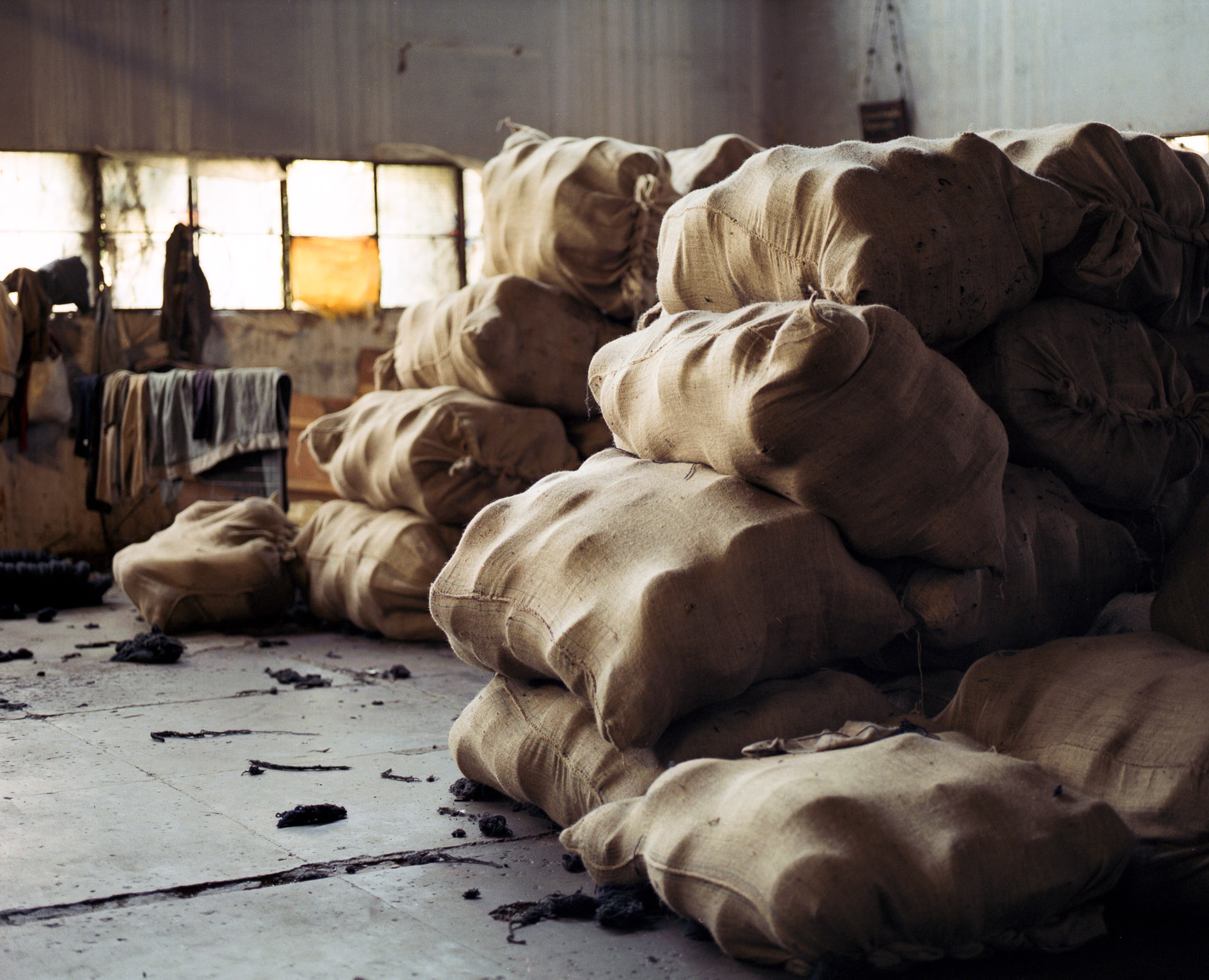
Sacks of recycled yarn.
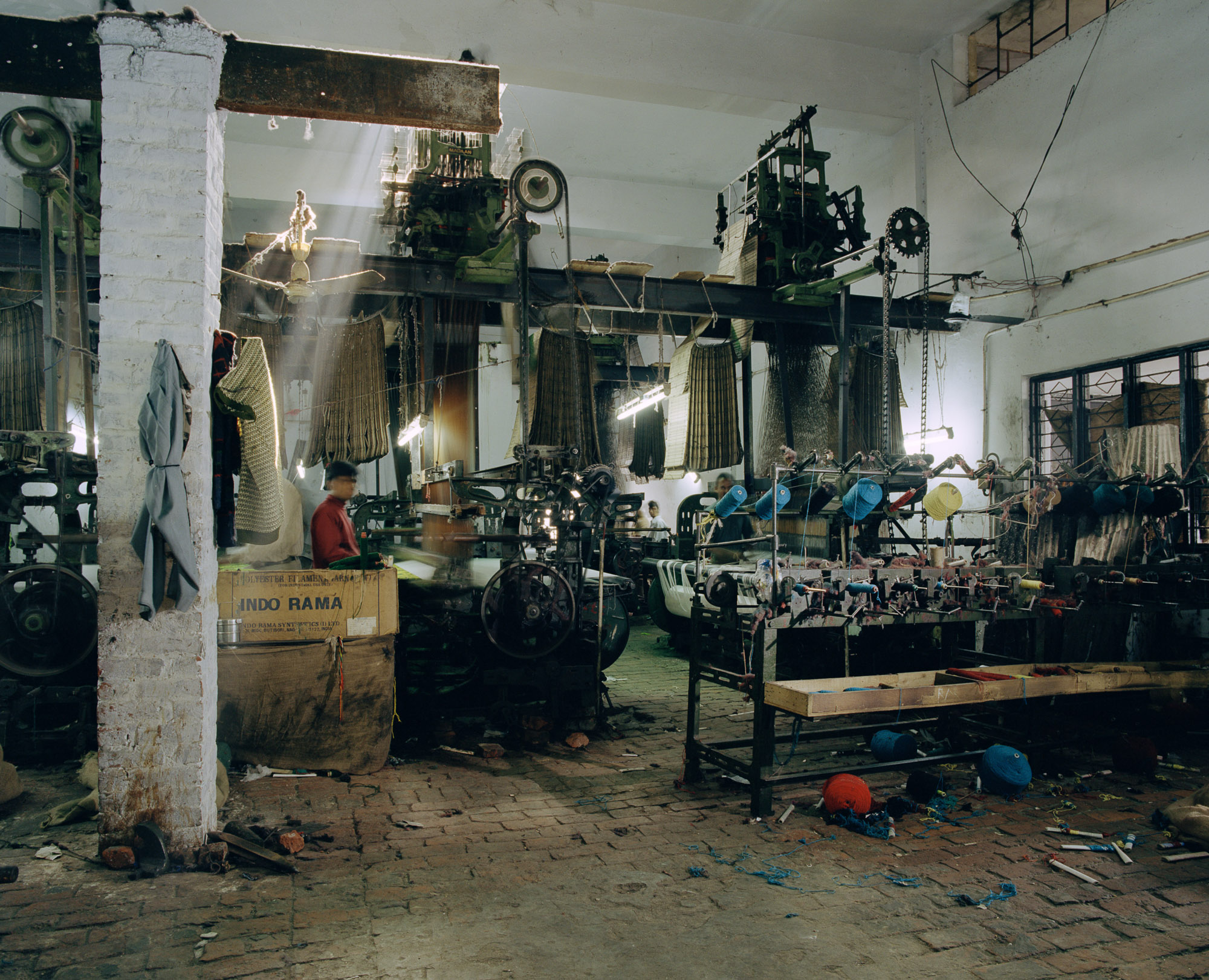
Other factories house heavy old power
looms used for weaving shoddy blankets.
Shoddy weaving expanded rapidly
in the 1980s, using machinery imported
from Italy and Poland.
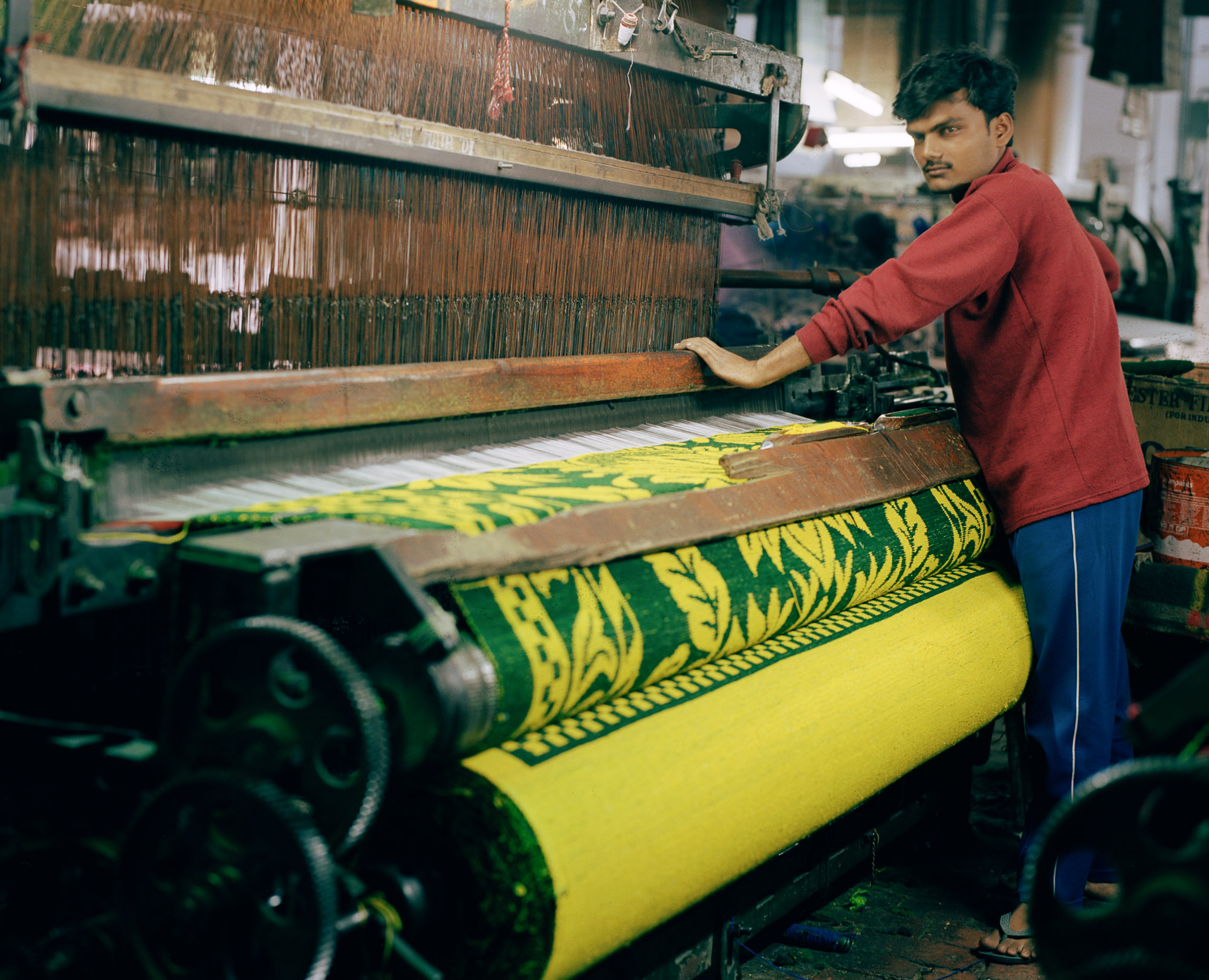
The more colourful blankets feature either
checks or flower designs; their origins as
recycled shoddy rarely disclosed.
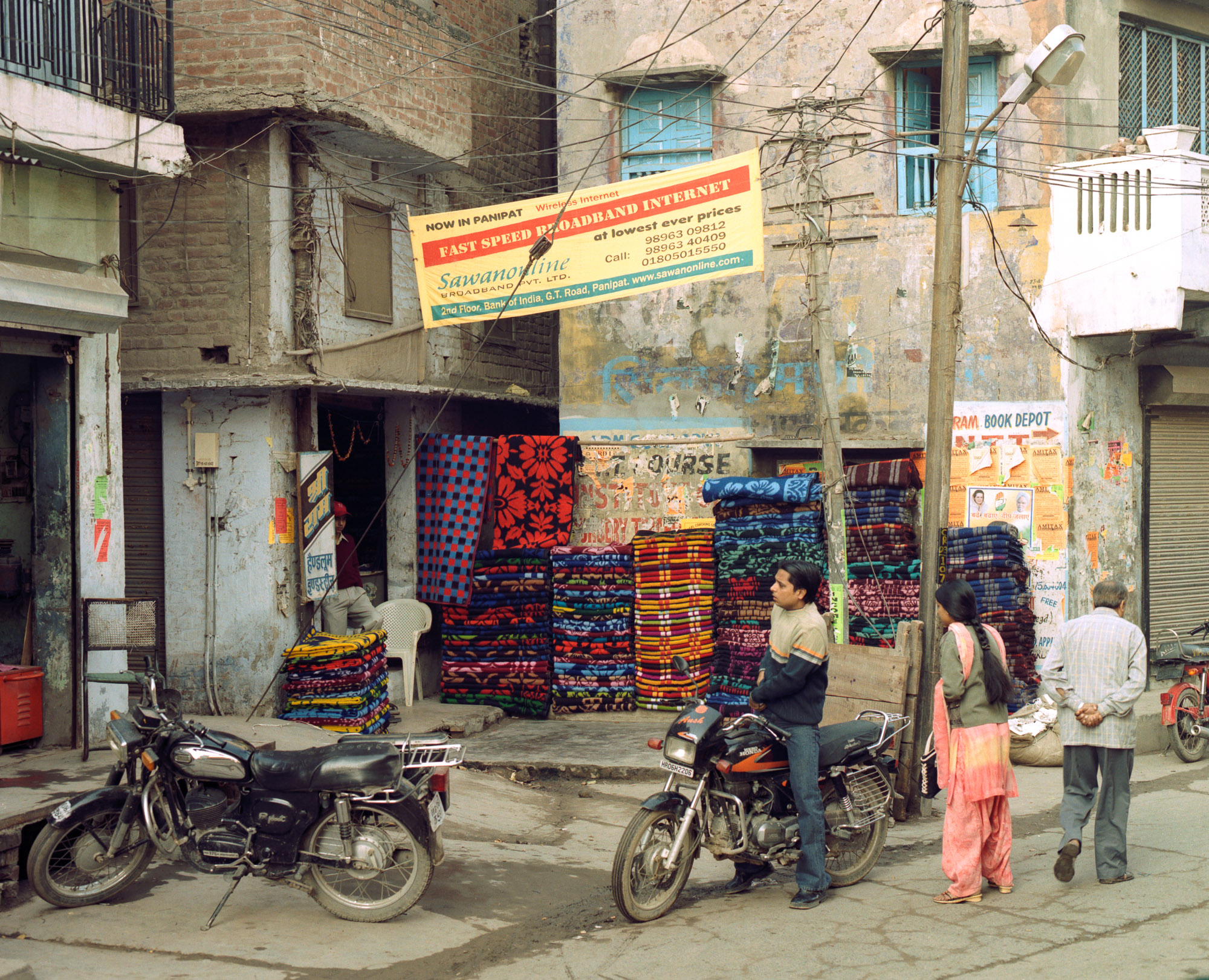
One of the many shops trading colourful
shoddy blankets within Panipat itself.
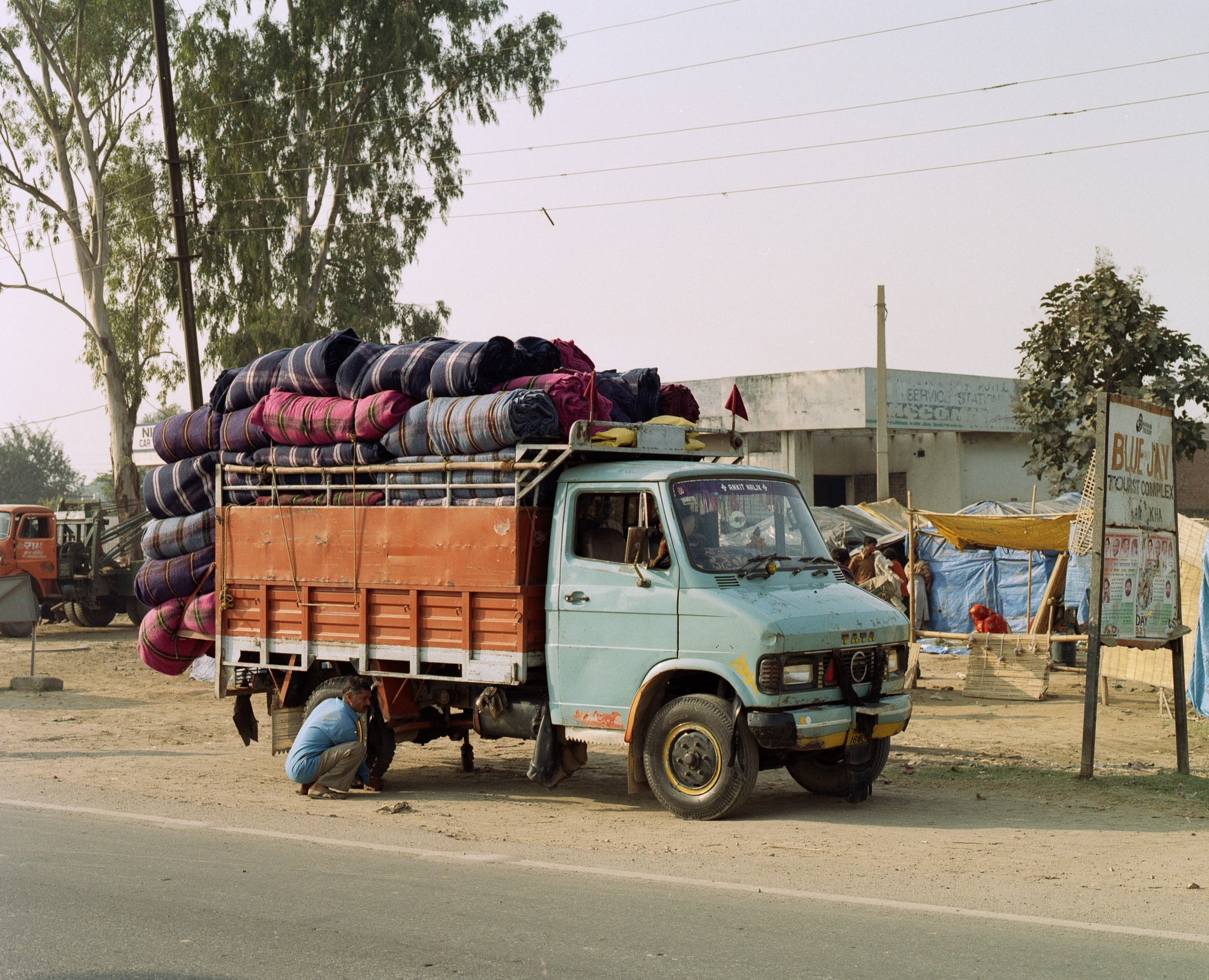
The less pure coloured, poorer quality shoddy
blankets leave Panipat destined for the aid
industries and the army.
A collaboration with Anthropologist,
Dr Lucy Norris.
For further details, please see
www.wornclothing.co.uk